#Toyoura
Photo

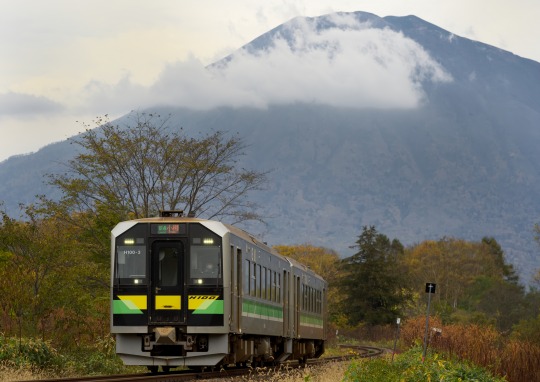
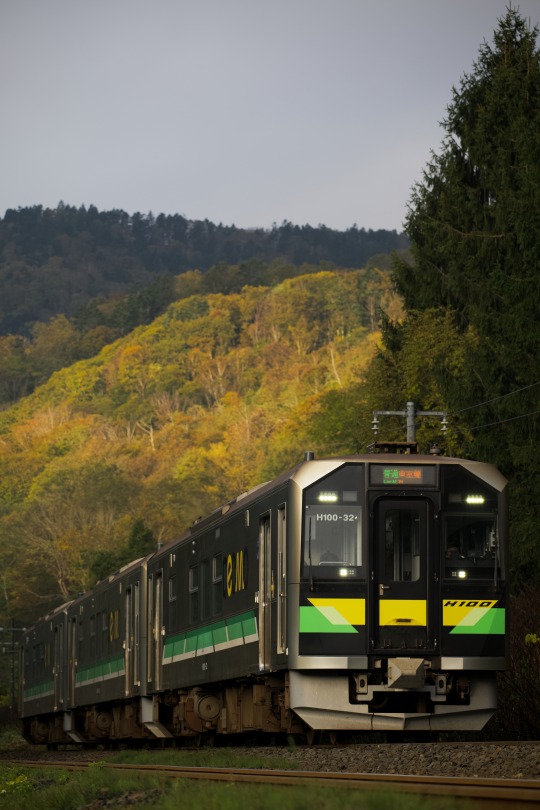

短い北海道の秋を追いかけ、あちらこちらへ・・・
前日気になった場所で撮影。今回はお山がいい塩梅で顔を出してくれました
(よんまるが走ってる間に来たら良かったと思うところばかり)
ほぼほぼ廃止が決定となった函館本線・山線。これだけ風光明媚なルートを走る路線ですが、残念なことに
【風光明媚≒人がいない】 が成り立ってしまうんですよね。
もちろん個人的には残ってほしいと思う一方、外野があれこれ言ったところで最終的に決定を下すのは沿線の方々。外野はかき回すことはせず、見届けるしかないと思ってます。
#DECMO#H100#豊浦#Toyoura#ニセコ#Niseko#北海道#Hokkaido#紅葉#羊蹄山#Mt.Yotei#Autumn Leaves#LUMIX S5#2022#10#室蘭本線#函館本線#山線
37 notes
·
View notes
Text

Akkorokamui from Shinto folklore.
In Shinto mythology, the Akkorokamui is portrayed as a humanoid creature with a vibrant red hue, reminiscent of the sunset's reflection on water. Standing at an impressive 120 meters, this entity shares characteristics with certain octopus species, possessing the unique ability to self-amputate and regenerate limbs. In Shinto belief, this regenerative quality translates into healing powers, with followers offering gifts to Akkorokamui in the hope of curing physical ailments, especially disfigurements and broken limbs.
According to a legend, Rebunge, a villager of Abuta Toyoura, fell victim to a spirit's curse, foretelling the devastation of his town. The curse took the form of Yaoshikepu, a creature with both spider and human attributes, unleashing havoc and turning the streets crimson with blood. Fearing this monstrous entity, the sea kami Repunkamui intervened, transforming Yaoshikepu into an octopus and casting her into the sea.
As Yaoshikepu grew in size underwater, she evolved to consume larger prey, including whales and ships. One ill-fated day, Akkorokamui ( the transformed Yaoshikepu) swallowed a boat full of fishermen, who, trapped inside, called for help. Responding to their pleas, Repunkamui poisoned Akkorokamui, causing immense pain. Seizing the opportunity, the fishermen escaped, but Akkorokamui adapted, learning to use the venom as a weapon against her prey.
Follow @mecthology for more myths and legends.
Pic generated by AI.
Source: Cryptidwiki & Wikipedia.
12 notes
·
View notes
Text

Akkorokamui
The Akkorokamui, also known as the Ashketanne Mat (long-fingered woman) is a part-human-part-octopus creature from Aino and Shinto folklore. The Akkorokamui is said to lurk in Funka Bay in Hokkaidō, Japan.
~~~ Legend ~~~~
Millennia ago, vengeful spirits cursed Rebunge, a villager of Abuta Toyoura, to see the destruction of his town. They sent a part-spider-part-human creature, called Yaoshikepu , to fulfill the curse. Yaoshikepu ran rampant throughout the town, causing destruction and slaughtering so many that the streets turned with crimson blood. After hearing the townsfolk’s prayers, the sea kami, Repunkamui, transformed Yaoshikepu into an octopus, and cast her into the sea.
After Yaoshikepu was cast into the sea, she grew and grew and grew. Eventually, she began to hunt and consume larger prey, like whales and ships. One day, Akkorokamui swallowed a boat full of fishermen whole. In her stomach, they called for help. Hearing the cries, Repunkamui poisoned Akkorokamui, allowing the fishermen to escape as she cried out in pain. However, Akkorokamui learned to use the venom Repunkamui inflicted on her to attack her prey.
Since then, there have been many recoded sightings of Akkorokamui throughout history.
~~~~~~~~~~~~
1800s sighting - John Batchelor
John Batchelor was on an expedition to Japan in the 1800s and wrote about his encounter with the Akkorokamui in one of his books. He stated that the beast was around 120 meters in length and confirmed the striking colour of the creature, Batchelor likened the red tone of the monsters skin “to the colour of the reflection of the setting sun upon water”. Batchelor’s account also corroborates the idea of Akkorokamui harnessing the poison inflicted upon her, stating that the creature’s lips “emitted a dark guild which has a very powerful and noxious odour”.
So what do u guys think? Is the Akkorokamui real or not? Let me know and have a debate in the comments if u want!
(Also first real post wooooo! It’s a shitty drawing but who gives a fuck :) and to the person who has decided to click on my post, have a great day friend!)
#tales from the boneyard#cryptid#myths and legends#akkorokamui#shitty drawing#artists on tumblr#i can’t draw faces at all#there’s a lot of text here oops
17 notes
·
View notes
Text
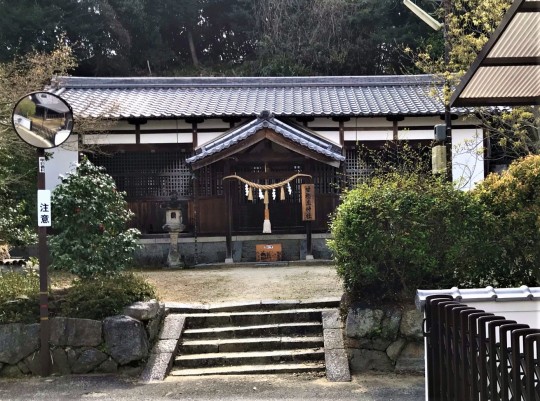
No Santuário Amakashinimasu-jinja, consagrado à Imperatriz Suiko, a primeira mulher a ascender ao Trono do Japão
Por Cláudio Tsuyoshi Suenaga (texto e fotos)
O santuário xintoísta (jinja) Amakashinimasu está localizado na colina (de apenas 148 metros de altura) Amakashi-no-Oka no vilarejo (mura) de Asuka, condado de Takaichi-gun, Prefeitura de Nara (626 Toyoura, Asuka, Takaichi District, Nara 634-0107). Era um Shikinai-sha (santuário listado nas antigas leis de Engishiki, livro japonês de leis e normas completado em 927 d.C.) e foi categorizado como um santuário de aldeia no antigo ranking de santuários.
O santuário é consagrado à primeira mulher a ascender ao Trono do Crisântemo, a Imperatriz Suiko (554-628, que reinou a partir de 592), o 33° Imperador do Japão.
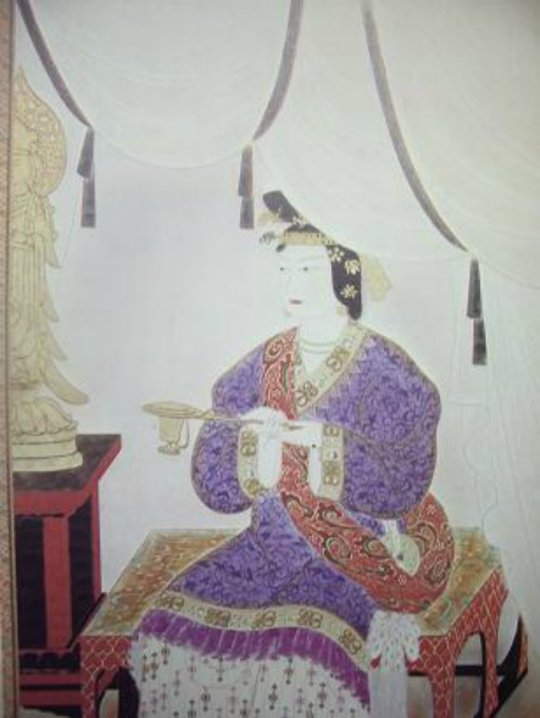
A Imperatriz Suiko, a primeira mulher a ascender ao Trono do Japão. Pintura de autor desconhecido.
O Amakashinimasu-jinja está localizado logo atrás do Toyurano-miya, o palácio onde Suiko foi entronizada, e topograficamente fica na área sinuosa do rio Asuka. Diz-se que a própria Suiko andou sobre os paralelepípedos desgastados que remanescem aqui, onde os pilares ficavam.

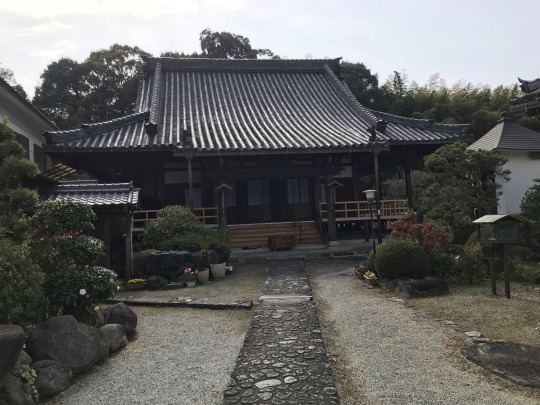
Toyurano-miya, o palácio onde Suiko foi entronizada.
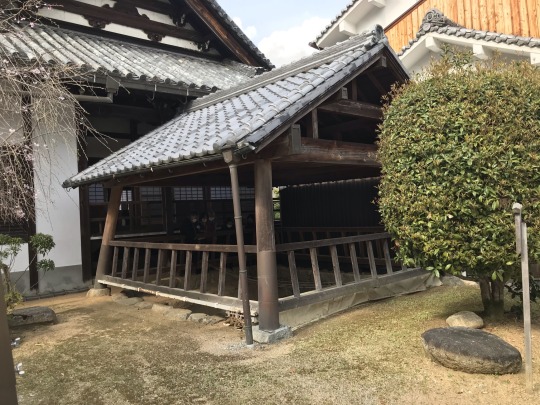

Aqui se pode ver os restos da fundação original do palácio.

Sobre estes paralelepípedos desgastados que remanescem teria caminhado a Imperatriz Suiko. Foto: https://asuka-japan-heritage.jp/global/en/suiko/detail/toyuramiyaato_s.html
Suiko, a segunda filha do Imperador Kimmei (509-571, que reinou a partir de 539) com Soga no Kitashihime, casou-se com o Imperador Bidatsu (538-585, que reinou a partir de 561) quando tinha 18 anos.
Maruyama (Montanha Redonda), em Asuka, no sul de Nara, o maior kofun de Nara e o sexto maior kofun, ou antigo túmulo, de todo o Japão, seria um dos locais de descanso do Imperador Kimmei, e de sua consorte Soga no Kitashihime, pais da Imperatriz Suiko. Os restos mortais de Kimmei e Kitashihime, contudo, não estariam em Maruyama, mas no Kimmei Tenno-ryo em Asuka. O Nihon Shoki afirma que quando Suiko enterrou novamente sua mãe, ela fez uma prece na estrada em Karu (agora Ogaru, Kashihara). Mas o livro não dá a localização do mausoléu.
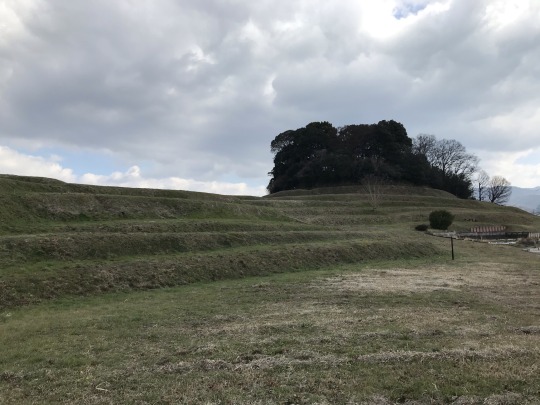
Foto que tirei do kofun de Maruyama, que mede 318 metros de comprimento e 21 metros de altura e apresenta um formato típico de buraco de fechadura ou jarra de maná, visto do alto.
Após a morte de Bidatsu, Yōmei (540-587, irmão de Suiko) chegou ao poder, mas morreu cerca de dois anos depois. Uma luta pelo poder se seguiu entre os clãs Soga e Mononobe, com os Soga apoiando o príncipe Hatsusebe, e os Mononobe apoiando o príncipe Anahobe. Na Batalha de Shigisan, os Mononobe foram derrotados, e assim o príncipe Hatsusebe é coroado Imperador Sushun em 587.
No entanto, Sushun começou a ressentir-se do poder de Soga no Umako (551-626), que ajudou a promover o budismo no Japão empregando imigrantes vindos da China e Coreia, e que provavelmente foi enterrado no kofun de Ishibutai, também na cidade de Asuka, em Nara, a maior estrutura megalítica do Japão, a qual pude visitar e pesquisar pessoalmente. Confira:
Soga no Umako, talvez por medo de que Sushun viesse a atacar primeiro, mandou Yamatoaya no Ataikoma assassiná-lo em 592. Quando lhe pediram para aceitar o trono para preencher o vácuo de poder que se abriu, Suiko tornou-se em 593 a primeira de várias imperatrizes, que são assim escolhidas para evitar uma luta sangrenta pelo poder.
Ela é ali uma shusaijin (principal divindade consagrada) entre as demais: Hachiman-gu no kami (deus do arco e flecha e da guerra), Amaterasu-ōmikami ("a Grande Deusa Augusta que Ilumina o Céu", da qual o Imperador do Japão diz ser um descendente direto), Yatagarasu no kami (o "Corvo de Três Patas Mensageiro do Céu") e Sumiyoshi Daimyojin ("Grande Divindade Brilhante").
Magatsuhi no kami (Maga significa "desastre", tsu significa "de", e hi significa "espírito divino", ou seja, "deus do desastre") e Naobi no kami (divindades de purificação e remoção de calamidades) são as divindades originais, conforme mencionado no Gogun Jinja-ki (Registro de Santuários em Cinco Condados). Foi logo após o Período Edo (1603-1868) que a Imperatriz Suiko foi consagrada como um shusaijin.
Diz-se que este santuário foi fundado por Takenouchi no Sukune, também chamado Takeshiuchi no Sukune (64-344), um estadista e herói lendário da História do Japão, adorado como um deus no xintoísmo.
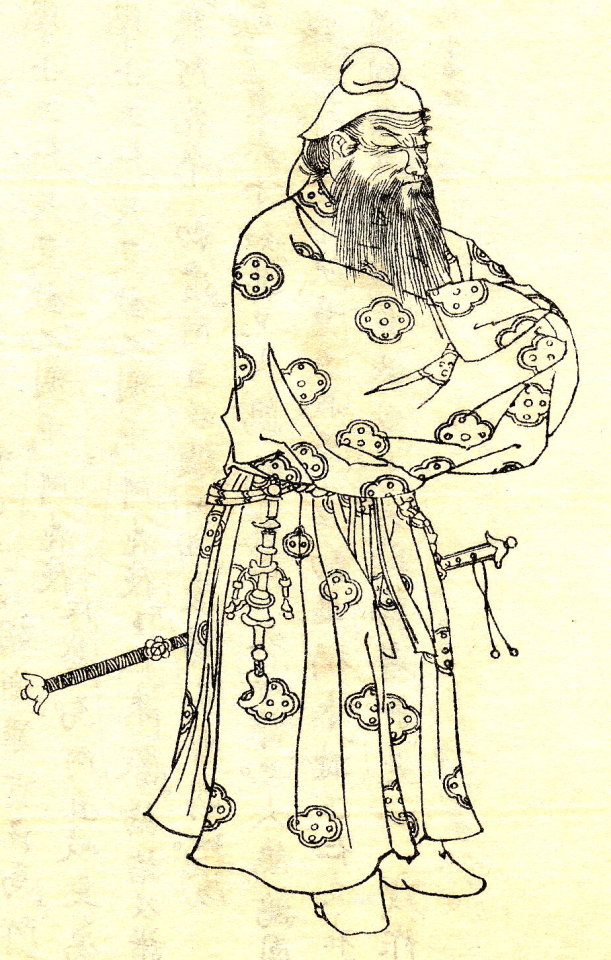
Takenouchi no Sukune desenhado por Kikuchi Yosai.
Takenouchi no Sukune era descendente do Imperador Kōgen (273-158 a.C.), o 8º Imperador do Japão. Takenouchi serviu a pelo menos cinco imperadores lendários (Keiko, Seimu, Chuai, Ojin e Nintoku), mas é mais conhecido por seu serviço como primeiro-ministro da Sesshō Jingū (Sesshō era o título dado a um regente nomeado para ajudar um imperador ou uma imperatriz até atingir a idade adulta), quando ajudou a Imperatriz-consorte Jingū (169-269) a preparar a invasão ao Reino de Silla. Pouco depois, Takenouchi foi acusado de traição. Ele foi submetido ao Kukatachi (uma forma de julgar colocando a mão em água fervente) para provar sua inocência.
A colina Amakashi-no-oka é o lugar onde a prova do Kukatachi era conduzida nos tempos antigos. Por isso o santuário é descrito como Yugisho no Kami ("o deus dos testemunhos com água fervente") no Gogun Jinja-ki (Registro de Santuários em Cinco Condados), escrito no período medieval.
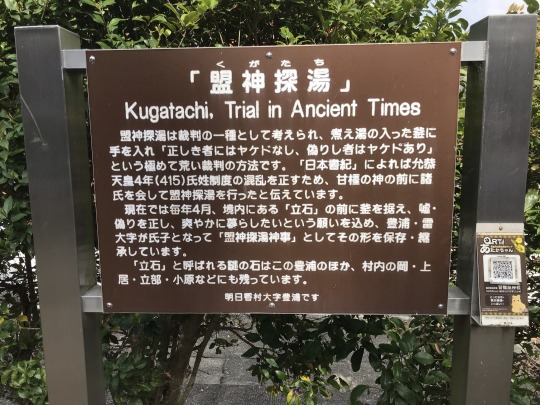
O cartaz diz: "Kugatachi, Julgamento nos Tempos Antigos".
Além de ter prestado serviços militares a esses imperadores, Takenouchi no Sukune era também um Saniwa (médium espiritual). A lenda diz que por ter bebido água diariamente de um poço sagrado, viveu até os 280 anos de idade. Vinte e oito clãs japoneses afirmam ser descendentes dele, incluindo os clãs Ki, Katsuragi, Heguri, Kose e Soga.
Takenouchi no Sukune é avô de Takenouchi no Matori, também chamado de Heguri no Matori, ministro da corte do Japão durante o Período Kofun (250 a 538 d.C.), que redigiu em uma mistura de caracteres japoneses e chineses a partir de documentos originais milenares escritos em Jindai Mōji ("a escrita da época dos deuses"), os controversos manuscritos Takenouchi Monjo, que conta uma história apócrifa não só do Japão como da humanidade, desde o início da criação até o surgimento do cristianismo, e antes dos registros do Kojiki (o livro mais antigo sobre a história do Japão) e do Nihon Shoki (Crônicas do Japão, o segundo livro mais antigo sobre a história do Japão). Os documentos de Takenouchi foram preservados pela família deste, de geração em geração, e mantidos dentro do Santuário Kousokoutai Jingu, na cidade de Ibaraki-shi, Prefeitura de Ibaraki, ate que em 1935, Kiyomaro Takeuchi, o caçula de uma estirpe de sacerdotes xintoístas, os descobriu.
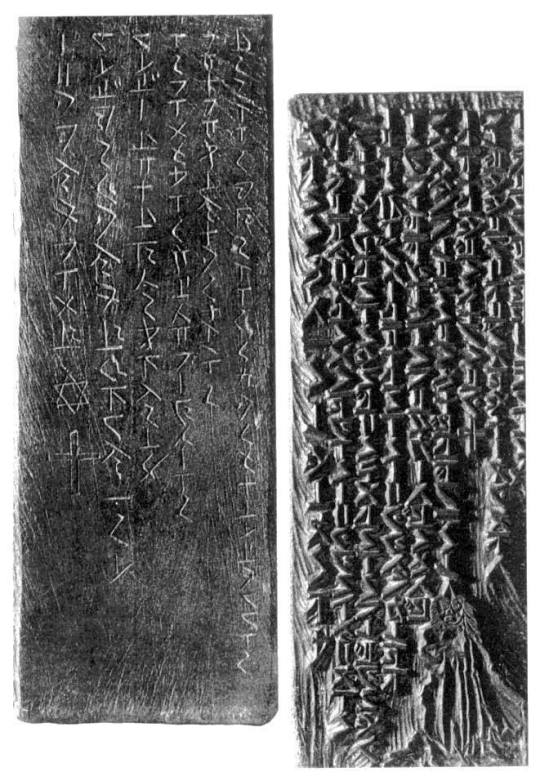
Parte do que seriam os documentos Takenouchi Monjo originais contando a história da presença de Jesus Cristo no Japão.
De tão explosivos e controversos, o governo japonês ordenou que os documentos Takenouchi Monjo fossem trancados em um museu em Tóquio e mantidos longe da vista do público. Durante a Segunda Guerra Mundial, Tóquio foi severamente bombardeada e o museu com todos os documentos foi supostamente destruído. Felizmente, a família Takeuchi havia feito cópias dos documentos antes de entregá-los ao governo. São essas cópias preservadas que podem ser vistas no Santuário Kousokoutai Jingu.
Os manuscritos Takenouchi falam de uma Era Dourada em nosso passado remoto em que a humanidade vivia em paz e harmonia, unida sob o governo mundial do filho de um Deus Supremo, e cuja sede estava localizada nas montanhas de Hida, ou Alpes setentrionais, uma cordilheira que atravessa as províncias de Nagano, Toyama e Gifu. O Santuário Kousokoutai Jingu era o mais sagrado de todos, tanto que todas as cinco raças da humanidade visitavam o santuário para celebrar um festival anual, e muitos grandes líderes espirituais o teriam frequentado para estudos e aperfeiçoamento espiritual, entre eles Moisés, Buda, Lao Tsé, Confúcio, Mêncio, Jesus Cristo e Mohammed.
Os documentos afirmam que Sumera-Mikoto, uma antiga palavra japonesa para "Filho do Sol", uma vez que os imperadores descenderiam do Deus Sol, fazia frequentes excursões por todo o mundo a bordo de um "navio voador" chamado Ameno-ukifune ("navio flutuante"). Os locais onde estes navios desembarcaram foram denominados "hane" ("ventos"), daí que muitos lugares no Japão tenham nomes que incluem a palavra "hane", como o Aeroporto de Haneda, em Tóquio.
Como os Jindai Mōji são uma invenção que data, no máximo, da época de Kamakura (1192-1333), ou seja, sua inexistência antes dessa data é corroborada pelas obras mais antigas do Japão, como os já mencionados Kojiki e Nihonshoki, que descrevem a chegada e a adoção da escrita chinesa em um arquipélago japonês que não tinha escrita, toda a credibilidade dos documentos Takenouchi Monjo fica comprometida. Ademais, a transcrição a partir dos originais foi feita por ninguém menos do que o astroarqueólogo e ufólogo Wado Kosaka (1947-2002), que não se fez de rogado e incluiu descrições de como os ancestrais da raça humana vieram do espaço sideral, do que aconteceu com a Atlântida, e, claro, onde Jesus Cristo terminou sua vida. O especialista em religião da Universidade de Quioto, Toji Kamata, classificou os documentos de “fakelore”.
Mas voltando ao Amakashinimasu-jinja, há um megálito em seu recinto, uma pedra gigantesca em forma de placa de gnaisse com 3 metros de altura chamada Tateishi. Há um buraco na frente dela, e o caldeirão usado para os rituais é colocado nesta parte. Ainda nos dias atuais, uma cerimônia chamada Meishintanyu Shinji é realizada no mês de abril.

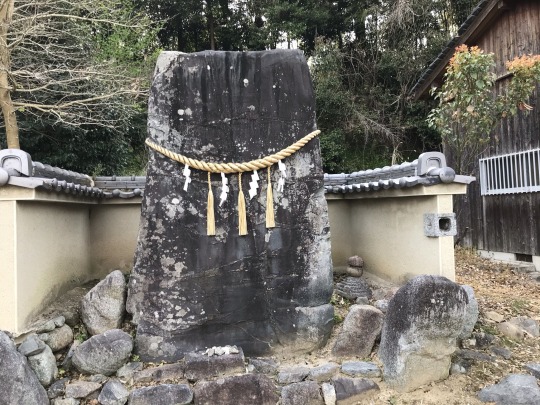

O Tateishi, um megático de gnaisse de 3 metros de altura, envolto pela corda shimenawa, um resquício da influência do judaísmo no Japão.
Conforme explico em meu livro recém-lançado pela Editora Revista Enigmas, As Raízes Hebraicas da Terra do Sol Nascente: O Povo Japonês Seria uma das Dez Tribos Perdidas de Israel?, na religião xintoísta há o costume de cercar um local sagrado com uma corda chamada shimenawa, que tem pedaços de papel branco inseridos ao longo da borda inferior da corda. A corda shimenawa é definida como limite. A Bíblia diz que quando Moisés recebeu os Dez Mandamentos de Deus no Monte Sinai, ele “estabeleceu limites” em torno dele para os israelitas não se aproximarem (Êxodo 19:12). Embora a natureza desses “limites” não seja conhecida, cordas podem ter sido usadas. A corda japonesa shimenawa pode então ser um costume originário do tempo de Moisés. O padrão em ziguezague de papéis brancos inseridos ao longo da corda remete aos trovões no Monte Sinai.
Saiba mais em meu quinto e mais novo livro
AS RAÍZES HEBRAICAS DA TERRA DO SOL NASCENTE: O POVO JAPONÊS SERIA UMA DAS DEZ TRIBOS PERDIDAS DE ISRAEL?
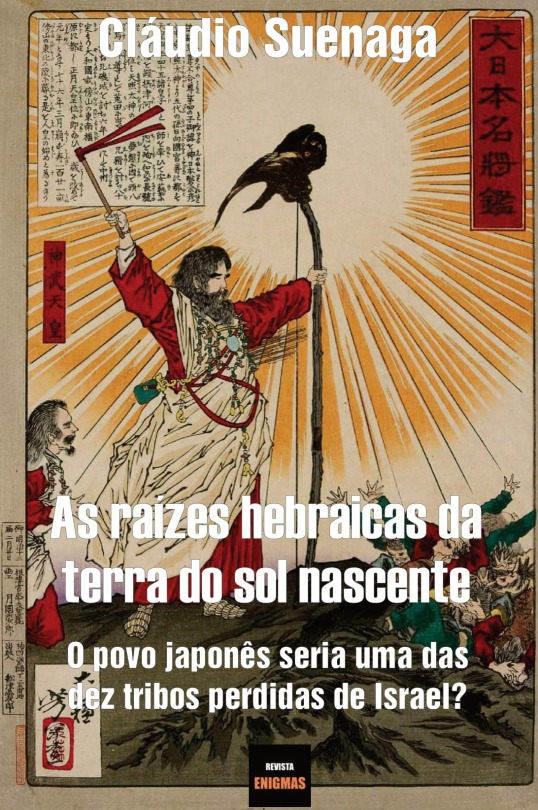
Sinopse: Algumas das maiores influências do Japão vieram de contatos com hebreus. Não só os mitos de origem, a genealogia divina, os rituais e os costumes são semelhantes, como a estrutura dos santuários xintoístas é equivalente ao Templo de Jerusalém, e o Mikoshi (santuário xintoísta portátil transportado em festas) é assaz parecido com a Arca da Aliança em tamanho e forma. Arca que muitos garantem estar escondida no Monte Tsurugi, na ilha de Shikoku, província de Tokushima. Além disso, na língua japonesa existem várias palavras hebraicas com a mesma pronúncia e o mesmo significado. Mas haveria algum fundamento na teoria da ancestralidade comum nipo-judaica, surgida no começo do século XVII, que afirma que o povo japonês pertence às Doze Tribos de Israel? Teriam os japoneses sangue hebreu correndo em suas veias? Seria esse o motivo de muitos judeus estarem discretamente adquirindo terras em várias partes do Japão? Você irá saber as respostas para tudo isso e muito mais ao refazer conosco o percurso milenar de judeus que ajudaram a forjar tanto o Japão antigo como o de hoje.
FRETE GRÁTIS PARA TODO O BRASIL. ENCOMENDE AGORA MESMO O SEU EXEMPLAR. VOCÊ NÃO PODE DEIXAR DE LER:
Assista ao documentário Hebreus no Japão, produzido, editado, apresentado e narrado pelo editor André de Pierre, com roteiro de Cláudio Suenaga, sobre o seu livro As Raízes Hebraicas da Terra do Sol Nascente: O Povo Japonês Seria uma das Dez Tribos Perdidas de Israel?:
youtube
#jinja#japan#religiao#judaísmo#nara city#historia#historical revisionism#arqueologia#templos#hebreus#megalithic#enigmas#livro#japão#Youtube
3 notes
·
View notes
Photo
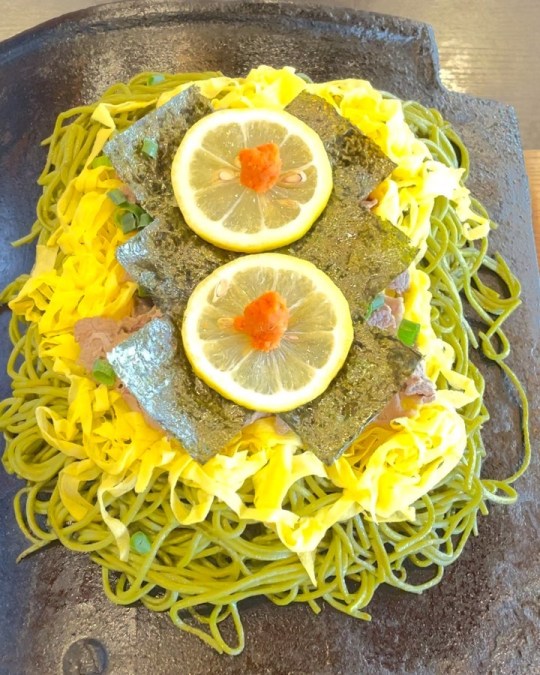
🟦🟦🟦🟦🟦🟦🟦🟦🟦🟦🟦🟦🟦🟦 Kawatana Onsen ganso Kawara Soba Takase 🟪🟪🟪🟪🟪🟪🟪🟪🟪🟪🟪🟪🟪🟪 ◆ Store information ・〒759-6301 5437 Kawatana, Toyoura-cho, Shimonoseki City, Yamaguchi Prefecture ・Business hours: [Mon-Fri] 11:00-15:00 (L.O. 14:30) [Saturdays, Sundays, and holidays] 11:00-20:00 (L.O. 19:30) ・Phone number:083-772-2680 🟫🟫🟫🟫🟫🟫🟫🟫🟫🟫🟫🟫🟫🟫 Homepage ↓ https://www.kawarasoba.jp/ Tourist information ↓ https://www.kawatana.com/member/t_bkan.html 🟨🟨🟨🟨🟨🟨🟨🟨🟨🟨🟨🟨🟨🟨 #福岡グルメ #北九州グルメ #福岡 #北九州 #瓦そばたかせ #瓦そば #門司港 #오오티디 #데일리 #ootd #food #fukuoka #instagood #これが食べたくて旅に出た #茶そば #山口 #yamaguchi #下関 #たかせ #美味しかった #ありがとう #楽しみ 🟥🟥🟥🟥🟥🟥🟥🟥🟥🟥🟥🟥🟥🟥 (元祖瓦そばたかせ) https://www.instagram.com/p/CqLMP5_plTw/?igshid=NGJjMDIxMWI=
#福岡グルメ#北九州グルメ#福岡#北九州#瓦そばたかせ#瓦そば#門司港#오오티디#데일리#ootd#food#fukuoka#instagood#これが食べたくて旅に出た#茶そば#山口#yamaguchi#下関#たかせ#美味しかった#ありがとう#楽しみ
0 notes
Photo

福岡に皆さんに和紙の仕事をお見せできる場ができました。 キッチンのシンクなど、ステンレス製造をしているトヨウラさんのショールームです。 カフェのようにどなた様もご利用でき、オーダーのキッチンなどが可能のようですよ。 是非行ってみてください。 施工はシンクが入っている背景の壁と天井です。 設計の鳥井さんよりリポスト #Repost @torii_masato_ with @use.repost ・・・ TOYOURA 博多ショールーム area : 1F year:2022 location:fukuoka type:orderkitchen showroom lighting : BRANCH LIGHTING DESIGN 中村 達基 photo:繁田 諭 / 繁田諭 写真事務所 #architecture#architecturedesign#interiorsdesign #hotel#funituredesign#toriimasatodesignoffice#hakata#showroomdesign #orderkitchen#トヨウラ#博多 https://www.instagram.com/p/CjMUtd_Pf1W/?igshid=NGJjMDIxMWI=
#repost#architecture#architecturedesign#interiorsdesign#hotel#funituredesign#toriimasatodesignoffice#hakata#showroomdesign#orderkitchen#トヨウラ#博多
0 notes
Photo



white-noise.wav
4 notes
·
View notes
Photo

ソフトボール⚾︎ #shimonoseki#igersjp#ig_japan#instagood#instagramjapan#sky#cloud#baseball#yamaguchi#toyoura#kids#nature (Shimonoseki, Yamaguchi) https://www.instagram.com/p/BzDTMm6h6xY/?igshid=13015bc6k2qtp
#shimonoseki#igersjp#ig_japan#instagood#instagramjapan#sky#cloud#baseball#yamaguchi#toyoura#kids#nature
2 notes
·
View notes
Photo

豊浦7 今日の1枚でーす👍 もう少しで出張ラスト❗ 頑張るぞ~😁 #hokkaido #toyoura #セブンイレブン #出張 (道の駅とようら)
2 notes
·
View notes
Photo

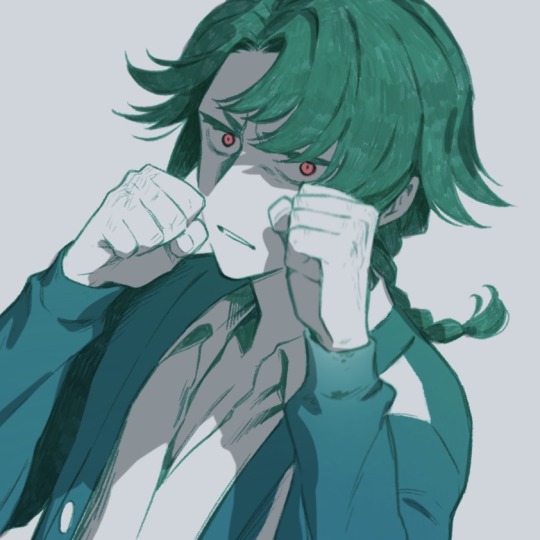
豊浦町といえば某元プロボクサーを輩出したまち。ボクシングといえば紳士のスポーツ。
なので普段は紳士らしく礼儀正しくしているけれど、なかなか元ヤンの気が抜けない。
いつもはスポーツマンシップを頭にきちんと入れている彼も、戦うとなれば話は別だ。ルール無用、反則なし、最後まで立っていた奴だけが勝者だ。
0 notes
Photo

熊走る
19 notes
·
View notes
Text
The Cafe in Toyoura
The heavy winds blew all the way along the coast. It was winter, and the temperatures often reached below freezing along the island of Hokkaido. A young man stood idle alongside the coastal highway that connected the cities of Toyoura and Toyako. He stayed in Hokkaido his entire life, so he was no stranger to cold weather, but the strength of the bay side breeze ripped through his skin, taking the cold to his bones. The man made this trip every day, with exception to days of heavy snow and ice, he would go from his hometown of Toyako to Toyoura by bike, it was 4 miles to it and 4 miles back home. He usually went on his ride around 4 P.M. so he could avoid the majority of traffic the road was usually plagued by. The man went so he could visit his grandma, who was nearing 86 years old, but also used it as exercise, as otherwise he did not do very much actively. He had seen all the sights that his location in Hokkaido had provided, even some in the capital city, Sapporo. The snow covered trees did not elicit the reaction that one from the southern-most areas of Japan would have, as the man had seen them many times throughout his life. However, the sea had always captured the man’s gaze, like it did now, as he stood looking on at the water’s wide horizon. No matter how cold it got in Hokkaido, the bay never froze over. After looking on for around 5 minutes, the young man hoisted himself onto his bike and made his way to Toyoura. He was about halfway there when he stopped, so the bike ride wouldn’t be very long. He passed by a few cars, fewer than normal though, the young man counted 3 cars on his trip so far, and he only saw 1 more since he had stopped. Not long after he questioned why there were so few cars, he realized why. Snow started to slowly fall from the sky, starting out with little tiny drops, then progressing into blinding heaps of snow. The young man had found himself in the middle of a snowstorm, no one had warned him of one when he left, and he didn’t check the weather before he left, a reoccurring event as he hadn’t checked it for the last few bike rides. He was dressed well for the cold, but not for a storm, he wore a blue knit hat, a near worn-out darkly colored coat and undershirt, and a pair of bluejeans with boots. He also wore a scarf, which the cold seemingly blew straight through, and glasses, which the snow had begun to stick to. The snow began to fall around a minute before he would’ve reached the town, and, deciding he didn’t want to ride to the farthest part of town to meet his grandma, resolved to finding a place to stay until the weather died down. He found a small cafe, populated by 2 cars and a moped, the windows were partially covered in snow, but he could see the reddish light coming from the inside and knew it was open and warm. He parked his bike at the cafe’s bike rack, making sure the seat was underneath the building’s awning so he wouldn’t have to deal with a snowy seat later. Once everything was in order, he went into the cafe.
The cafe was warm, similar to the warmth provided by a living room’s fireplace, and reeked of strong coffee beans. There were a total of 3 people inside, the barista, a young woman of a similar age to the young man, a salaryman drinking a cup of sake, and an old man sitting in the back reading an old book, though the young man could not see what book it was. The barista looked up at the man and smiled, then looked back down at whatever she was doing behind the counter. The young man wiped his boots of snow on the doormat and took off his hat, stuffing it inside one of his coat’s few pockets. As he walked to the counter, he heard the salaryman slurring his words, and wondered how much sake he had drunk. He was wearing a black suit with tie and dress shoes, the usual attire for a salaryman, though his outfit was disheveled. The young man looked towards the older man, and could now see the book he was reading was called “The Sound of Waves.” It was falling apart, being held together by tape and pure luck. The room was decorated like most cafes, a few tables with chairs, warm yellow light fixtures and a painting of the Bay of Uchiura. The young man reached the counter, and waited patiently for the barista to make her way over to him. After a few seconds, she stood in front of the young man, waiting to take his order. However, the young man was struck by the woman’s beauty. Her dark brunette hair was tied in a messy bun, complemented by a pair of round glasses masking light brown eyes underneath. Her face was pale from the winter’s cold, and she had red blush along her cheeks. The warm light from inside contrasted with the brightness of her face, making it seem to the young man as if she were a painting brought out from her portrait. He caught a glimpse of her name tag, and saw that her name was Aoi. The young man, taking a moment to absorb all of this information, responded in a stutter that resembled the words “I’m just taking shelter from the cold.” “Then you must want something to warm you up, how about a coffee?” Aoi had responded. The young man nodded, ordering a black coffee, and then pulled out his wallet and paid the 2 dollar fee. As she had walked away, the young man’s eyes couldn’t help but follow her to the machine. To him, she seemed to take the light with her, as when he readjusted his eyes forward, the room seemed to darken from the bright warmth he just previously felt. After a minute, Aoi had returned with the young man’s coffee, and set it in front of him. The young man thought to initiate a conversation with Aoi, but felt an ache in his stomach each time he attempted to produce a word. Half an hour had passed, and the snow had stopped outside, though the young man did not yet realize this, as he was still stuck in the thought of Aoi. He only noticed when another customer had walked in the cafe, bringing the young man out of his trance-like state. He now noticed the snow had stopped, and he must continue on his bike ride lest he make his grandmother annoyed. He got up and threw his coffee cup in the trash bin by the door. He then pulled his hat out of his jacket pocket and put it on, making sure it fit around his ears. As he opened the door, he looked behind him at the barista one last time, and their gaze had met each other, before she quickly looked down again. The young man stepped out into the cold and smiled at the air. He thought to himself that stopping for coffee on his bike rides wouldn’t be too far out of his way to go. Walking over to his bike, he brushed off the little amount of snow that landed on his seat, grabbed the bike and pushed it through the thin snow that covered the ground, before climbing onto it, and setting off for his grandmother’s house. He hoped his grandmother wouldn’t be mad, but he had a new story to tell her, about the beautiful girl he saw at the cafe in Toyoura.
8 notes
·
View notes
Text
poetry

United colours of spring at Refresh Park Toyoura Yamaguchi, Japan
Photo: Astrailor(アストレーラー) (@astrailor_jp)
* * * *
"Poetry met my particular sense of need. Writing a poem, I sometimes felt like I was building a house from scratch, raising the walls, hanging the doors, laying out the rooms. It felt at times like backbreaking work. Other times, it seemed that what I was trying to evoke or encounter in a poem was already alive somewhere and that my job was merely to listen. The language of each of the poetry workshops I’d taken was built upon the assumption that there really was something else at play. My teachers talked about our poems as if they were sentient beings with plans and wishes of their own, wishes it was up to us to carry into language. “Your poem seems to be leading you in one direction, but you insist upon going in another.” Or, “Try and cut out all this noise so you can hear what the poem is trying to tell you.” It sounded quite nearly mystical, like we were playing at divination, but it also rang true. Wasn’t it strange that a poem, written in my vocabulary and as a result of my own thoughts or observations, could, when it was finished, manage to show me something I hadn’t already known? Sometimes, when I tried very hard to listen to what the poem I was writing was trying to tell me, I felt the way I imagined godly people felt when they were trying to discern God’s will. “Write this,” the poem would sometimes consent to say, and I’d revel in a joy to rival the saints’ that Poetry — this mysterious presence I talked about and professed belief in — might truly be real.
Often, that spring, I found myself sitting in a reading room window with a book I ought to have been reading for class, but I also always had a black sketchbook into which I’d begun writing lines of my own. Sometimes, I wrote the same stanza over and over until something was unlocked and I could move forward. Once or twice, I’d stopped mid-poem, altogether stumped, and started a letter to myself in which I’d describe whatever it was I was having trouble getting into language: What does it mean to slog through the weight of the everyday, to wake to anxiety, to spend the day straining to hear what they must be saying now that you’re out of earshot, to have to put on the boots, though you’re tired, always tired, and just keep going? Sometimes all of the watching and listening and waiting finally gave way to a poem":
The Ordinary Life
To rise early, reconsider, rise again later
to papers and the news. To smoke a few if time
permits and, second-guessing the weather,
dress. Another day of what we bring to it-
matters unfinished from days before,
regret over matters we’ve finished poorly.
Just once you’d like to start out early,
free from memory and lighter for it.
Like Adam, on that first day: alone
but cheerful, no fear of the maker,
anything his for the naming; nothing
to shrink from, nothing to shirk,
no lot to carry that wasn’t by choice.
And at night, no voice to keep him awake,
no hurry to rise, no hurry not to.
Tracy K. Smith
[Thanks to Poietes]
[via alive on all channels]
#quotes#Tracy K. Smith#the Ordinary Life#Poietes#poem#poetry#Alive On All Channels#(@astrailor_jp)#Japan
9 notes
·
View notes
Text
JAXA Spacecraft Carries Science, Technology to the Space Station
JAXA - H-II Transfer Vehicle-8 (HTV-8) Mission patch.
Sept. 6, 2019
The Japan Aerospace Exploration Agency (JAXA) cargo ship H-II Transfer Vehicle-8 (HTV-8) is scheduled to lift off Sept. 10 at 5:33 p.m. EDT (6:33 a.m. Japan Standard Time) to the International Space Station from Japan’s Tanegashima Space Center, 10 years after JAXA launched its first HTV mission. HTV-8 arrives at the space station on Sept. 14.
Image above: The Japanese Space Agency (JAXA) developed an uncrewed cargo transfer craft, called the H-II Transfer Vehicle (HTV), to deliver supplies to the International Space Station. This image shows the HTV-7 resupply ship after its release from the Canadarm2 robotic arm as the space station orbited above the Pacific Ocean some 311 miles west of Baja California. Image Credit: NASA.
Here are details about some of the scientific investigations and facilities heading to the orbiting lab on HTV-8.
Preparing for dusty landings
The new Hourglass investigation examines how different levels of gravity affect the behavior of granular materials such as regolith, dust that covers the surface of planets and planetary-like bodies. A better understanding of the behavior of these granular materials supports design of spacecraft for future landings on the Moon, Mars and other celestial bodies.
Image above: Samples for the Hourglass investigation include lunar, Mars and Phobos regolith simulants, Alumina beads, and Toyoura and Slica sands. Image Credit: NASA.
Scientists are conducting similar research on regolith and granular materials using the space station’s Hermes research facility. Hermes provides long duration exposure to microgravity and the vacuum of space.
Better space-to-ground and space-to-space communication
The Demonstration of Small Optical Communication System (SOLISS) investigation demonstrates new technology for future broadband data communication in space. SOLISS is an optical system mounted on the Japanese Experiment Module (JEM), an external platform providing continuous exposure to space for a variety of experiments. SOLISS technology allows transmission of large amounts of data from the space station, as well as from satellites in geostationary orbit to ground stations.
Related article:
JAXA and Sony CSL to Conduct In-Orbit Demonstrations of Long-Distance Laser Communication
https://orbiterchspacenews.blogspot.com/2019/08/jaxa-and-sony-csl-to-conduct-in-orbit.html
Predicting flammability in microgravity
FLARE explores the flammability of materials in microgravity by burning various solid fuels under different conditions inside a flow tunnel. Microgravity significantly affects how combustion occurs, but current tests of the flammability of materials for crewed space missions do not consider the effect of gravity. This investigation demonstrates a new way to predict flammability in microgravity that could fill this gap and significantly improve fire safety aboard spacecraft on future exploration missions. Final components of the FLARE module arrive on the cargo ship.
Related links:
H-II Transfer Vehicle-8 (HTV-8): https://www.nasa.gov/mission_pages/station/structure/elements/htv.html
Hourglass: https://www.nasa.gov/mission_pages/station/research/experiments/explorer/Investigation.html?#id=8007
Hermes: https://www.nasa.gov/feature/hermes-to-bring-asteroid-research-to-the-iss
Small Optical Communication System (SOLISS): https://www.nasa.gov/mission_pages/station/research/experiments/explorer/Investigation.html?#id=7750
Japanese Experiment Module (JEM): https://www.nasa.gov/mission_pages/station/research/experiments/explorer/Facility.html?#id=134
FLARE: https://www.nasa.gov/mission_pages/station/research/experiments/explorer/Investigation.html?#id=7880
JAXA HTV-8 Mission: http://iss.jaxa.jp/en/htv/mission/htv-8/
Space Station Research and Technology: https://www.nasa.gov/mission_pages/station/research/index.html
International Space Station (ISS): https://www.nasa.gov/mission_pages/station/main/index.html
Images (mentioned), Text, Credits: NASA/Michael Johnson/JSC/International Space Station Program Science Office/Melissa Gaskill.
Best regards, Orbiter.ch
Full article
6 notes
·
View notes
Text
The Hamartia Arc: Through Brine and Tides (Part 2)
((Agent 7, Bigfin Splatoon, Kimun and the Neanderthal Tribesmen, and Laguna “Garza” Rayne, Abigail Atled Calliostro, and others belong to me
Agent Blueshift belong to @myzzy
Wonder Inkling and Wonder Inkling Jr. belong to @inklingleesquidly
Agent 0 belongs to @son-of-joy ))
The naval ink-mine fields that were lined from the Koma-ga-take Mountain Peak to the city of Muroran have been breached. The fishing boats that were mustered at Aomori were able to carefully disarm the bombs as quick and efficient as possible. The entire right side of the first line was clear, and the counterattack fleet proceeded to sail into the bay, starting with an attack on Muroran. The other cities in the bay were being fired with ink-artillery: Date, Oshamambe, Yakumo,Toyoura, Toyako, and Mori.
The counter-attack is already begun.
Colonel Jenna and Gravis arrived in the port city of Muroran. The waters were occupied with Agent 7′s counter-attack fleet.
All the Amemasu Military units stationed at there were all wearing gas masks with red-lense eyes. It was a sign that they would stand and fight. Sharklings, who are the commanding officers of the militia, welcomed the neanderthal and the pikeblenny with a salute.
Gravis and Jenna proceed to the Institute of Technology where they will deliver the commands from.
“Report!” Gravis commanded.
“The ships have been deployed to stop them at the Hakucho Bridge, but it seems they have fishing boats that are rendering the ship propellors immobile,” an Amemasu Commanding Officer reported.
“We cannot risk any more warships to be deployed until those fishing boats are eliminated!” Another Amemasu Commanding Officer reported.
“All ground units stationed in Muroran are placed on hold,” An inkling Amemasu private reported, “All commanding officers gave the order to rally at watchtower points, marked with spotlights.”
Colonel Jenna looked at the private unit. “Where’s your commanding Officer? I expected them to come to me instead of a messenger boy.”
“He was wounded critically. One of the enemy warships shot his flag vehicle at the Hakucho Bridge—” The inkling gets shot by Colonel Jenna by an Octo-shot.
The colonel took a deep breath and proceeds to have a map layout of the city along with some pieces to represent the units of the Amemasu Federation and Agent 7′s Campaign Army.
“I heard there were attacks before this, on Hokuto and Kojima Island.” Colonel Jenna taps her fingers on the two areas. “I will not risk sending reinforcements less risk splitting up defenses. Radio them to fight with all they got until the last man is dead. If Jason wants to deliver a piercing attack, he will need to pierce deep through these defenses. Let’s play his game.”
The officers saluted. “Glory to the Federation!”
Under the Hakucho Bridge...
“Beta 4.13, Beta 8, with me! Agent Recruits, the navy is yours. All able soldiers prepare to super jump onto the Hakucho Bridge!”
“Right!” Beta 4.13 responded.
“That’s crazy! But whatever can get us out of these waters!” Beta 8 replied.
“Wonder Inkling and Wonder Inkling Jr. are right behind you, Agent 7!” Wonder Inkling replied.
“I’m ready to splat some Amemasu!” Agent 0 hyped.
“Ready when you are, Seven,” Blueshift replied.
Currently, the fleet cannot go any further past the Hakucho Bridge less they ram into the enemy fleet. Their propellors may be down, but the ships were still armed and ready to board with enemy ink-shooters.
A number of counter-attack fighters volunteered, numbering up to 75 people; the rest remained in the ships to help stoped the boarding enemies. All of them were armed with Inkopolis brand ink-weapons. Despite the numbers, their power was enough no matter the situation, especially in war.
“On the count of three, jump,” Agent 7 commanded, “One... Two... Three!”
They all turn into their cephalopod forms and jump out of the ship and onto the concrete platforms of Hakucho Bridge. Abandoned cars were present, and there was no sign of the enemy coming.
“Okay, so far so good.” Agent 7 move onto instructing where to go. “Two-thirds of the counter-attack will go south of the bridge to make it look like we made out attack on the peninsula, Hijack some vehicle and go Mad Max on them... I mean just fight them with vehicles! I will lead a third north of the bridge to head straight to the Takasagocho Ward.”
“Agent 0 and I take care of things around the peninsula,” Blueshift offered.
“This is going to get interesting.” Agent 0 prepared his ink-blade.
“Then that means we’ll be with Agent 7, fighting towards Takasagocho,” Wonder Inkling stated.
And with that, they split up, Blueshift and Agent 0 went off to do some hit-and-run tactics and hijack some vehicles with the two-thirds of the counter-attack. Agent 0 swung his ink-blade, splatting the Amemasu’s militants; he even hit a sharkling elite down with his built-in shield.
Blueshift was able to clear a vehicle parking area with his ink-disks. They disks ricochets around and splatted the militants and knocking out the elites. When it was clear, their contingent went into to steal keys and take over the wheels.
Agent 7 and the Wonder Inklings would go north of the bridge to fight their way through rushed defense who didn’t prepare for this lightening attack.
Since Agent 7 and the Wonder Inklings were going on foot, they and the third of the counter-attack took a while to reach the Takasagocho Ward. They had to pass through a few facilities, neighborhoods, and hills to get to Chiribetsu Park. At this point, they looted some intel to get an understanding of the terrain and how the defense was planned. Here, this is where they’ll take the high-command by surprise.
Agent 7 instructed like a military general, barking orders at his men.“The contingent will split into teams of four. Create a chain of diversions to keep the Amemasu busy and confused. Make sure they don’t see you. Don’t get caught. Cover your tracks. I need five volunteers to come with me and the Wonder Inklings to go further north. Our target is the Muroran Institute of Technology, and we will set up a beacon.”
Agent 7′s contingent did so and split up; they would be wreaking havoc on several vital spots of the military heart. It left many of the Amemasu forces in disorder, reacting strongly to all the attacks but lacking any protocol to rebound.
Agent 7 and the Wonder Inklings made their way towards one of the buildings of the Institute. They would encounter a few guards and splatted them without warning. When they reached a room where the operations are being handled, there are no signs of anyone working there. Equipment and computers were still on, but no one to operate them.
“No one?” Junior questioned.
Agent 7 puts his N-zaps away and searched. “Maybe they left something.”
For minutes, they would be going through the data that was left behind. They weren’t able to figure out where everyone in the room went. It was until Agent 7 searched through a personnel computer that he found a lead.
“From Colonel Jenna...” Agent 7 presses the button.
A screen popped up and it showed a recorded video message. A Neanderthal in military uniform was glaring at the camera.
“Agent 7. You sure came quite quickly to this area.” Colonel Jenna adjusted her military cap. “I was going to stand my ground along with Gravis, but the attack you’re throwing seem to hit hard on my defenses. However, I was able to mitigate the attack by forcing my men to fight until the last man is dead. Look to the windows.”
“What does that mean?” Agent 7 then looked at the windows which had closed blinds.
“Hmm...” Wonder Inkling Sr. walked over and opens the blinds. She is then shocked. “Get down!”
Agent 7 and the Wonder Inklings quickly took cover and avoid and inkling blast stronger than any blaster in turf wars. The ink bubble sent bursts enough to cover the room in ink and sabotage the equipment and computer present.
Out the window was a view of the athletics grounds. Gravis and Jenna were there along a few Amemasu Sharkling Elites. Gravis, the yellow pikeblenny, is carrying a cannon that he ripped off a tank. He was using it as his personal weapon of choice.
When Agent 7 and the Wonder Inklings recover to look out the window, Jenna and Gravis were already boarding a convoy.
“They going to escape!” Junior alarmed.
“We have to follow them...,” Agent 7 ordered, “We have to rally everyone... at Date.”
“Agent 7?” Wonder Inkling Sr looked at him.
“Forget the beacon... they’re a living target...” Agent 7 took out his N-zaps. ‘They have to be...”
“Seven!” Wonder Inkling Sr objected.
Agent 7was silent for a moment, and he took a deep breath. “Stay with the counter-attack.... stay with the counter-attack... Alright, let go then...”
Despite the hesitance, they leave immediately. A flare is fired into the sky to signal a rally and the contingent responded and followed. Agent 0 and Blueshift already had their contingent arrive when the streets of Muroran. They hijacked a number of jeeps and armored cars.
“Took you long enough!” Agent 7 actually didn’t expect the two agents to do this. “Some of the elites are retreating to Date.” He gets into the jeep with Blueshift and Agent 0.
“Why a retreat?” Blueshift questioned.
“They’re probably retreating to another defense point,” Wonder Inkling Sr speculated.
“Who knows, I want all fleets to stop at Date. We’re camping there for the night.” Agent 7 ordered as the wheels started turning. “I’ll radio the fleets the message.”
2 notes
·
View notes
